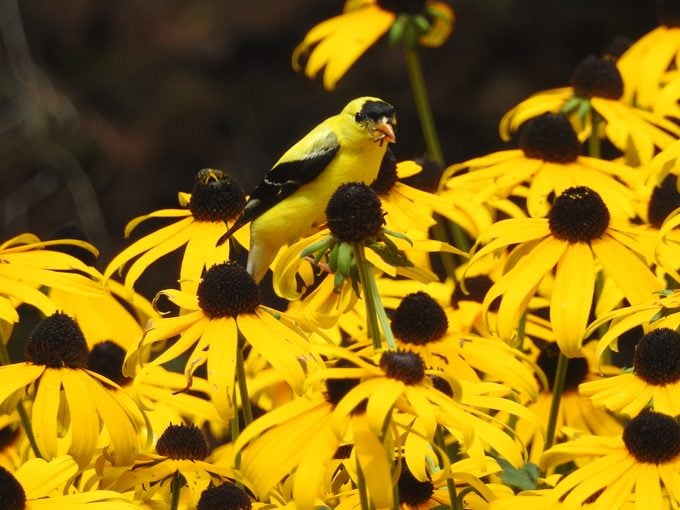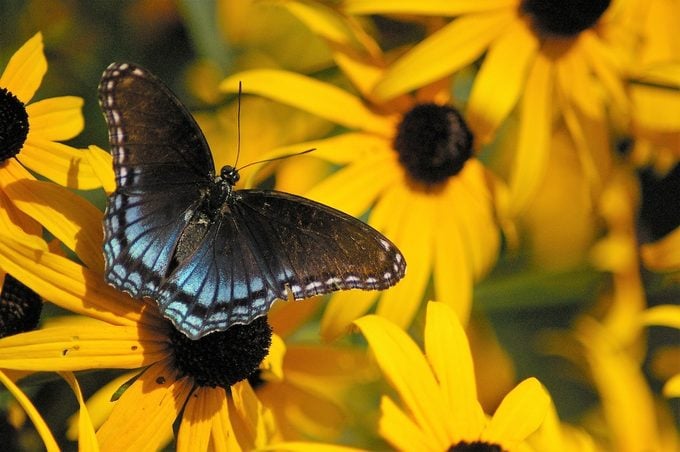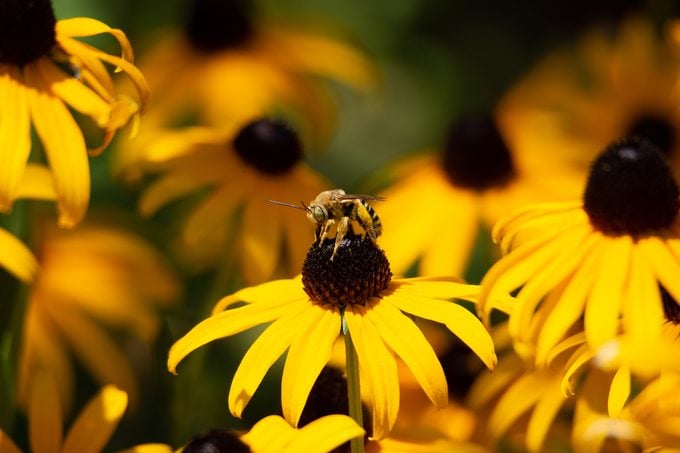Birds and Butterflies Love Black-Eyed Susan Flowers
Updated: Jul. 24, 2023
Make the pollinators in your backyard happy by adding black-eyed Susan flowers to your garden! Here's how to grow them.
Black-Eyed Susan Flower Care and Growing Tips

Also known by the scientific name, rudbeckia, black-eyed Susan flowers are known for their brilliant yellow blooms and their lengthy growing season. These plants are full of bright, cheerful, daisylike flowers that lend a golden hue to the garden from midsummer to frost. Depending on species and cultivar, rudbeckia may range anywhere from 1 to 8 feet tall.
Black-eyed Susans grow best in full sun and in moist, well-draining soils. They tend to be very forgiving and require little care. Once the plants are established, it’s best to water them slightly less than to overwater, as overwatering can lead to developing diseases. There’s no need to fertilize. Note that these plants typically self-seed. Gardeners might need to do some cleanup and maintenance work to stop them from taking over or wandering into nearby flower beds.
Grow more native plants for birds.

- Common name: Black-eyed Susan
- Botanical name: Rudbeckia spp
- Zone: 3 to 9
- Light: Full sun
- Soil: Moist, well-draining
- Size: 1 to 8 feet tall
Learn how to care for purple coneflower plants.
Benefits of Growing Black-Eyed Susans

“I took this picture of the rudbeckia flower (above) in my yard with a bee on it one July. The flowers are a favorite of bees and butterflies,” says Birds & Blooms reader Ted Belling.
It’s true—black-eyed Susan flowers bring in pollinators, including native bees and butterflies, and even your favorite songbirds. Butterflies and bees are drawn to the nectar and birds enjoy snacking on the seeds in the flower’s brown-black center—especially goldfinches.
Learn how to grow a perfect wildflower meadow for butterflies.
If you’re investigating adding black-eyed Susans to your yard, there are plenty of cultivars you can select from. For gardeners working with less room or even containers, consider Little Goldstar. Its bright golden yellow flowers with chocolate centers appear from midsummer to early fall. They’ll adapt to dry and moist soils and even heavy clay, but they do best in a well-draining soil with ample moisture. Little Goldstar looks great in a border or container. Best of all, they’re deer resistant.
Plus, check out black-eyed Susan vine for vertical garden interest.
